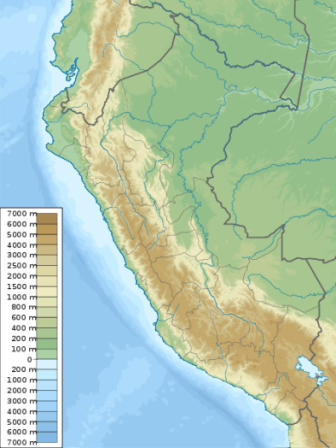It’s hard to avoid the effects of altitude in Peru. Most travelers will cross over the Andes at some point, normally to stay at high altitude locations such as Cusco, Puno and Huaraz.
For the majority of travelers, especially those who take time to acclimatize, the effects of altitude will be limited to some extra puffing and panting. Altitude sickness, however, is a serious issue, and one that can require some additional planning to allow for acclimatization.
Visit the Tourist Information Center in Lima for travel info, money exchange, sim cards, maps, and more.
Money – USD can be used in most places but recommended to exchange to Peruvian Soles. Credit cards are accepted everywhere. Be aware of high ATM withdrawal fees.
Flights – LATAM Airlines is the best airline for internal flights, the most reliable with the least cancellations.
Bus travel – Peru Hop is the most reviewed and highest-rated travel company. Their website is very detailed and full of useful info. Read more HERE
Machu Picchu – Book in advance (ticket, train, guide, and bus all needed). Yapa Explorers is strongly recommended for the best tours/treks to Machu Picchu, click HERE for more info.
Must-visit places Huacachina Oasis, Rainbow Mountain, and Secret Slave Tunnels have been considered the MUST-VISIT places in 2025.
Day Trips in Peru – Short on time? Check the best-rated Day Trips from Lima to Paracas & Huacachina or full day Sun Route tour in the Cusco/Puno route with Inka Express!
TIP 1: Gradual Ascent – Many people think they need to spend 2 or 3 days in Cusco, before Machu Picchu, to acclimatize. If travelling to Cusco from Lima we strongly recommend to follow Peru Hop’s route along the coast and up to Cusco from the beautiful city of Arequipa. This route ascends gradually which will give you some important time to acclimatise to the thinner air and help prevent any issues when visiting the UNESCO heritage site. It also means then you don´t need to “waste” days in Cusco adjusting. Travel by bus where possible…the slow gradual ascent helps a lot compared to flying direct from sea level to Cusco.
TIP 2: Keep yourself well hydrated, also drink some Coca tea or chew the local Coca leaves to alleviate symptoms of Soroche. Slow down, avoid alcohol and don’t walk too much. The first day at altitude it is important to give your body some time to adjust.
Altitudes are defined as follows:
| High Altitude: | 1,500 to 3,500 m (5,000 to 11,500 ft) |
| Very High Altitude: | 3,500 to 5,500 m (11,500 to 18,000 ft) |
| Extreme Altitude: | above 5,500 m (18,000 ft) |
The height to remember, however, is 2,500 m (8,000 ft) above sea level — the elevation at which altitude sickness can occur (while possible below this level, it is extremely rare). The risk of altitude sickness increases as you go higher. Be particularly cautious when ascending to the “very high altitudes” of 3,500 m and above.

The following table includes a selection of high-altitude locations in Peru (heights are approximate). Locations in grey are below the 2,500 meter mark and can be considered safe in terms of altitude sickness (although you will still feel the effects of high altitude). Location in black are above the 2,500 meter mark and locations in red are in the “very high altitude” range and should be treated with extra caution.
| Location | Altitude |
| Cerro de Pasco | 4,330 m (14,200 ft) |
| Highest point on Inca Trail (Warmiwañusqa pass) | 4,200 m (13,780 ft) |
| Puno (Lake Titicaca) | 3,810 m (12,500 ft) |
| Chivay | 3,630 m (11,910 ft) |
| Cusco | 3,399 m (11,152 ft) |
| Huancayo | 3,259 m (10,692 ft) |
| Huaraz | 3,052 m (10,013 ft) |
| Urubamba | 2,870 m (9,416 ft) |
| Ollantaytambo | 2,792 m (9,160 ft) |
| Ayacucho | 2,760 m (9,058 ft) |
| Písac | 2,715 m (8,907 ft) |
| Cajamarca | 2,700 m (8,858 ft) |
| Machu Picchu | 2,430 m (7,970 ft) |
| Abancay | 2,378 m (7,800 ft) |
| Arequipa | 2,350 m (7,710 ft) |
| Chachapoyas | 2,335 m (7,660 ft) |
Peru altitude map © Urutseg, Wikimedia Commons
If you are interested in a trip to this amazing country we suggest you check out Peru Hop, the top-rated travel company in Peru that helps travelers have a trip of a lifetime in a unique and flexible way.